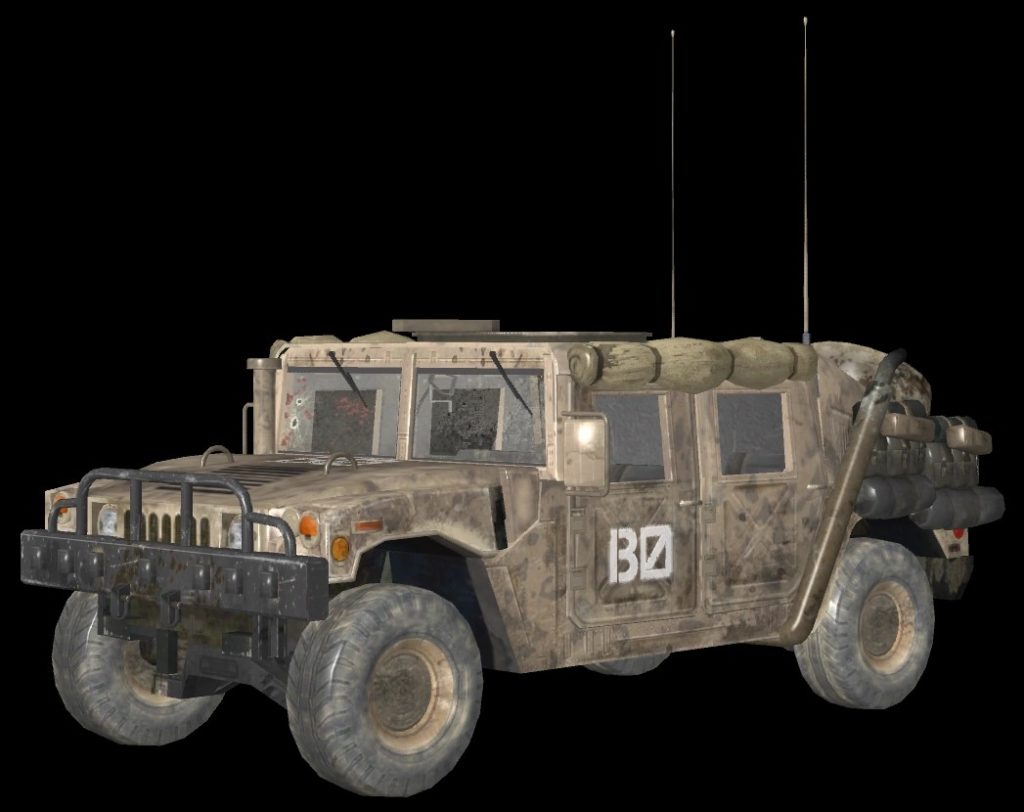Video games have grown in realism since the days of pong on an Atari console. As technology allows for higher resolutions and graphics, so does the need for attention to detail. In certain cases, video game developers try to depict the real world. There are legal implications when this real-world depiction goal includes trademark protected items, such as Humvees.

The federal Lanham Act governs trademarks at the federal level. There are two basic requirements: (1) that a mark be definable and (2) used in commerce. 1 You need to be able to know what the mark symbolizes when you see it and use it in business to get the Lanham Act’s protections. However, these protections are not all-encompassing.

The Call of Duty video game franchise remains one of the most popular entertainment products in the world, with millions of copies sold. The “Modern Warfare” subset of that franchise depicts modern militaries in action. These games try to immerse a player in combat. The game attempts to do this through the depiction of actual military equipment, including Humvees. Activision, the company making the games, was sued by the Humvee’s manufacturer (AM General) for their unauthorized depiction of the Humvee in the games. 2

The Humvee is a registered trademark of AM General. Trademarks are an important component of business practices around the world. Think the Nike swoosh, and how the swoosh is so identifiable and important to Nike as a business. One might think that copying the symbol or mark would be a violation of the law. AM General certainly thought so and sued. The reality of trademark law is more nuanced than one may believe. Having a Trademark does not necessarily mean that no one else can use it for any reason, as we can see from the results of A.M. General v. Activision.
It is a reasonable assumption that using someone’s mark in a profit-making enterprise would be a violation of the law. Courts will weigh more than the commercial interest of the trademark holder when making decisions. In A.M. General v. Activision, the court applied a legal test that allows for use of a Trademark so long as the origin of the trademark is not mistakenly identified. In the video games in question, this misleading behavior does not occur. In fact, the use of the Humvee is important to the experience of the game, even though the actual maker of the vehicle is not specifically identified in the game.
In their decision, a federal district court found that the use of the Humvee in the game did not violate the Lanham Act, and thus Activision was not liable to A.M. General.3 If A.M. General appeals to the Supreme Court, and the Supreme Court upholds the decision, there are significant implications for trademark law. Artists, if they could prove that depiction of a trademark is essential to the artistic experience, and does not misrepresent that trademark too much, would be able to depict that trademark without fear of legal consequences.
1 15 U.S.C. § 1127 (1946).
2 AM General, L.L.C. v. Activision Blizzard, Inc., No. 17 Civ. 8644, 2020 WL 1547838, at *1 (S.D.N.Y. Mar. 31, 2020).
3 Id. at *5.
